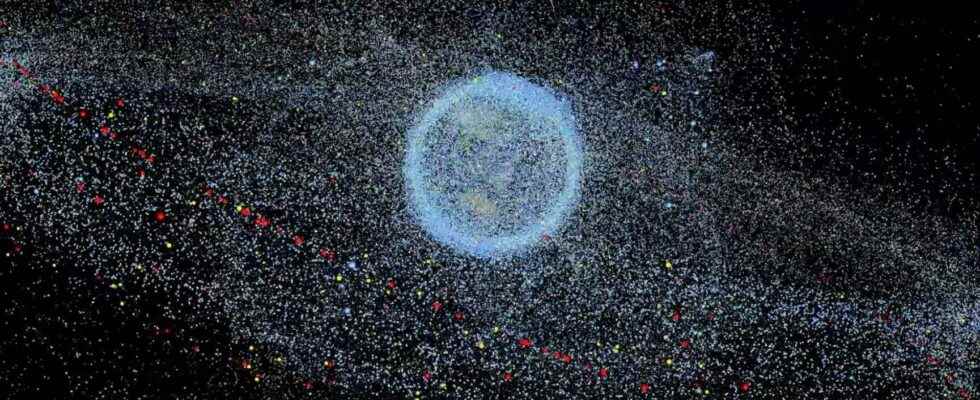You will also be interested
[EN VIDÉO] Capture of a piece of debris to be deorbited In this configuration the ClearSpace satellite uses a clamp. But depending on the debris, other means of capture will be possible.
We still remember this shooting carried out last November by the Russian army. To everyone’s surprise, in growing fears of an invasion of Ukraine, Russia fires an Asat A-235 Nudol missile at the former Soviet satellite Kosmos 1408. The shock generates 1,500 menacing space debris at a time the International Space Station (which notably hosts astronauts… Russians) and the chinese space station.
A global trend
The Russian Asat firing sparked anger NASA, the Pentagon, the White House, theEuropean Space Agency, and many Western authorities condemned the initiative. But this is not the first time that an anti-satellite test shot has been carried out. The last dates back only to March 2019, made by Indian Defense — a first for the country. He produced thousands of space debris some of which still hang around in low orbit today, despite the authorities having guaranteed that they would not remain for more than a few months.
The anti-satellite shot that made the biggest impression is that of China in 2007. It was realized much higher than the others, at more than 800 km (twice as high as the ISS). Consequently, the generated debris was much less in contact with the rare molecules of the terrestrial exosphere and had less tendency to go down again to burn in our atmosphere. Even today, there are many left.
If the United States is the first to stop their program test of anti-satellite shots, they were nevertheless the first to have carried out. They are also the ones who have done the most! That said, the last test was in 2008 and most of the other tests were done in the last century. The United States therefore still has an anti-satellite strike force, they have just decided to stop the tests. Why that ? The answer in a nutshell: too much debris today.
Increasingly disturbing space pollution
The Russian shooting in November not only angered the authorities. All the satellite operators in the world have unanimously condemned the irresponsibility of the Russians. The difference with the last American test in 2008 is that these operators have multiplied, especially in the United States, and the number of satellites put into orbit per year has increased from a few hundred in the early 2010s to almost two thousand today. today, notably with the arrival of the SpaceX’s Starlink Constellation. And that’s nothing compared to the imminent arrival, tomorrow, of other megaconstellations of communication satellites (OneWeb, Amazonetc.).
Not only does it become difficult to just follow such traffic, but adding debris from Asat shots doesn’t help. From Earth, observatories are multiplying to follow the traffic from below, but more and more operators are calling on new companies that offer to follow it from above… with their own constellation satellite!
Not only are satellites increasingly in danger from others, but operators are obliged to monitor threats of debris 24 hours a day. When the threat is too strong, operators must perform evasive maneuvers that consume fuel and therefore reduce the life of the satellite. When the threat weighs on a space station, the astronauts must take refuge in their respective ships and wait, ready to leave in an emergency. All this costs them more and more time which is already very precious in their mission.
The other problem is that the debris is occupying orbits that could be exploited. All these unoccupied areas are more and more important in a less and less large space and bring in more and moremoney. Stopping the anti-satellite tests is therefore a salutary and more than expected measure. Still it will have to be followed.
Interested in what you just read?
